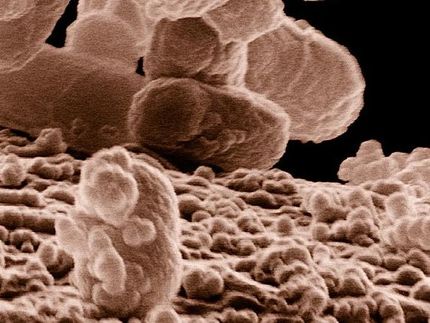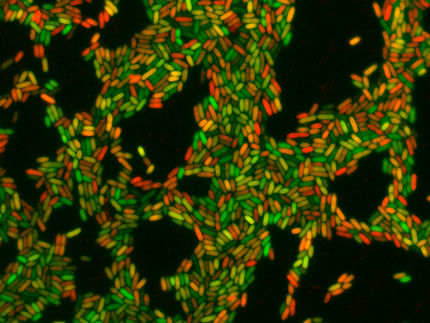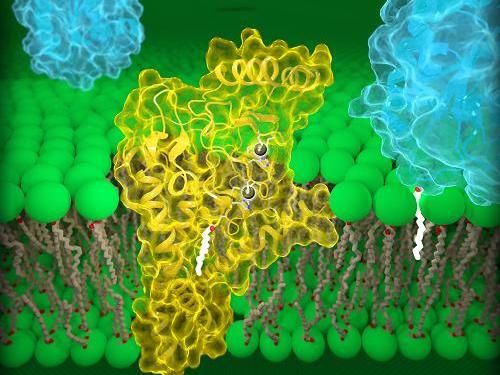Improved security for dairy products: Minilab identifies antibiotic residues in milk
No one wants antibiotic residues in their milk. But antibiotics are sometimes used even in the dairy barn. The routine tests conducted nowadays take hours to produce a result and do not test for all of the typical antibiotics. This gap can now be closed, thanks to a fully automated minilab developed by scientists from the TUM in cooperation with the LMU Muenchen and gwk Praezisionstechnik GmbH.
Even at the best of farms, including organic farms, dairy cows can fall ill and require antibiotics. As drug residues in milk may be harmful, milk from sick animals must be kept out of the milk production chain. Meanwhile the European Community has established maximum residue values to protect consumers. However, the current method of testing for antibiotics in milk is laborious and fragmentary. Within the European Dairy Industry overall, loss of production and sanitation of dairy products due to milk contaminated with antibiotics add up to a loss of more than 200 million euros per year.
Dairies attempt to counteract the risk by conducting spot checks. Any milk sample that inhibits the growth of test bacteria comes under initial suspicion and is then tested on the basis of more extensive analyses. The disadvantage is that it takes hours and is very expensive to do so. If drug residues are not found until late in the production process, the lost output and disposal costs can reach business-critical dimensions. Companies in the dairy industry are therefore searching for a fast and simple way of establishing the presence of virtually all antibiotics that may be used on dairy cattle.
With this aim in mind, scientists from the Chair for Analytical Chemistry at the TUM and the Chair for Hygiene and Technology at the LMU developed a glass chip and an analysis unit that can identify the presence of residues from one or more of the 14 most important antibiotics with certainty and in parallel. To do this the scientists use what’s known as an antigen/antibody reaction. A glass plate is marked with dots of the antibiotics, this is known as a microarray. Then they add antibodies to the milk sample which bind specifically to the antibiotics. If an antibiotic is present, most of the antibodies are bound depending on the concentration. The rest of the antibody molecules bind to the corresponding antibiotic on the glass-chip.
Through a chemoluminescence reaction, as it is used to detect blood in forensic samples, the dots carrying the highest load of antibody light up most. If the milk sample contains antibiotics, the luminosity of the dot is correspondingly reduced, because the antibodies have been used up already. The light intensity is measured with an electronic camera, thus supplying proof, not only of whether there is an antibiotic in the milk, but also of how much of it is present.
Working with gwk Präzisionstechnik GmbH, the scientists developed a fully automated minilab, which, in conjunction with the microarray, precisely determines whether or not the maximum permitted limits are exceeded in raw, unpasteurized milk.
“These kinds of microarrays have long been in use in the medical sphere and in research labs,” says Dr. Michael Seidel from the TUM’s Institute of Analytical Chemistry. “This milk chip is the world’s first fully automated analysis system to employ the technique in practice with milk samples that have not been pretreated.” It takes just under six minutes to achieve a result. And each microarray can be reused up to 50 times. This makes it the fastest and cheapest system of its kind in the world.
Original publications: Kloth, K.; Rye-Johnsen, M.; Didier, A.; Dietrich, R.; Märtlbauer E.; Niessner, R.; Seidel, M., "A regenerable immunochip for the rapid determination of 13 different antibiotics in raw milk."; The Analyst 2009, 134, 1433 - 1439.
Kloth, K.; Niessner, R.; Seidel M., "A open stand-alone platform for regenerable automated microarrays. Biosensors & Bioelectronics 2009, 24, 2106-2112.
These products might interest you
See the theme worlds for related content
Topic world Antibodies
Antibodies are specialized molecules of our immune system that can specifically recognize and neutralize pathogens or foreign substances. Antibody research in biotech and pharma has recognized this natural defense potential and is working intensively to make it therapeutically useful. From monoclonal antibodies used against cancer or autoimmune diseases to antibody-drug conjugates that specifically transport drugs to disease cells - the possibilities are enormous

Topic world Antibodies
Antibodies are specialized molecules of our immune system that can specifically recognize and neutralize pathogens or foreign substances. Antibody research in biotech and pharma has recognized this natural defense potential and is working intensively to make it therapeutically useful. From monoclonal antibodies used against cancer or autoimmune diseases to antibody-drug conjugates that specifically transport drugs to disease cells - the possibilities are enormous





























































